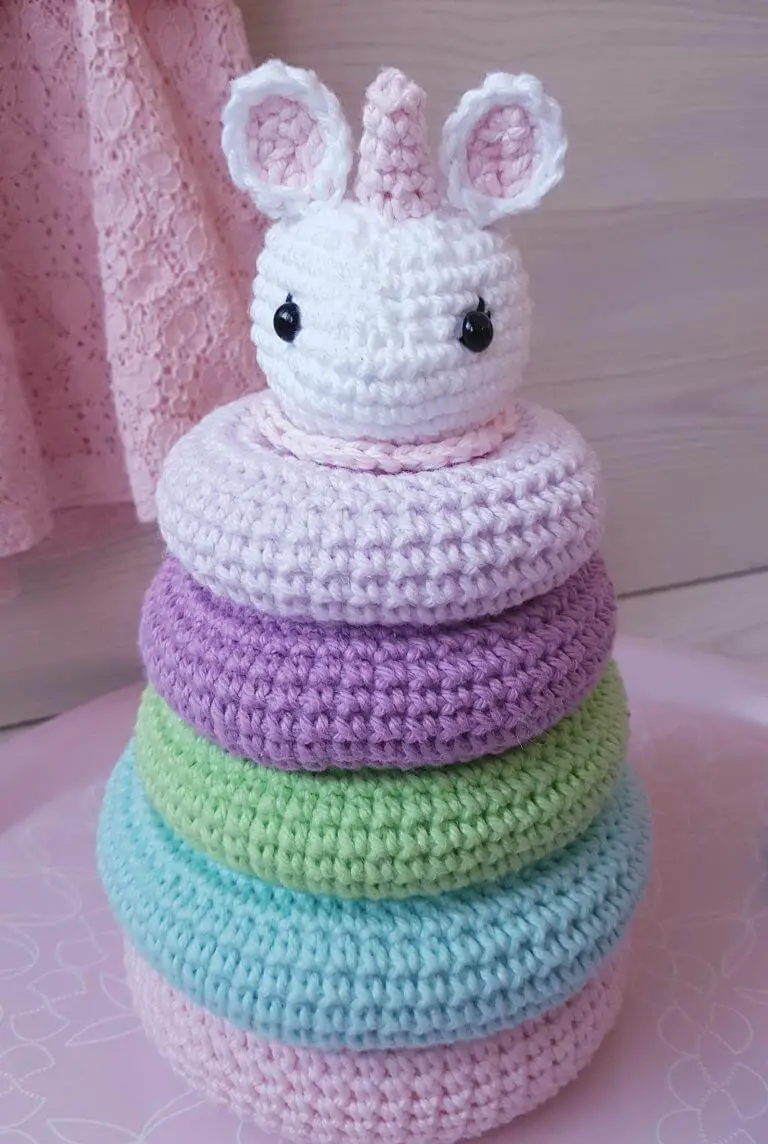What Color Ceiling With Alabaster Walls: Ideal Hues To Complement Your Space
Selecting a ceiling color that harmonizes with alabaster walls can elevate the overall ambiance of a room. Alabaster’s soft, warm undertones provide a versatile canvas suitable for various decor styles and color combinations. This off-white shade has the potential to create a sense of brightness and spaciousness in a room. When choosing a ceiling color, consideration of lighting, room size, and desired mood plays a crucial role in determining the ideal match.
A lighter ceiling color, such as pure white or soft gray, can create a sense of height and openness, while darker tones like navy or black can evoke a more dramatic and intimate atmosphere. The key is to strike a balance between harmony and contrast within the room, ensuring the chosen ceiling color resonates with existing furniture, fixtures, and textiles.
Key Takeaways
When it comes to selecting a ceiling color, alabaster walls provide a unique advantage. This versatility allows for greater flexibility in coordinating colors with the rest of the room’s aesthetic. In particular, opting for lighter ceiling shades can create an illusion of increased space, making the area feel more open and airy. Moreover, the ceiling color should ideally harmonize with the overall decor and style of the room, ensuring a cohesive and visually appealing atmosphere.
Understanding Alabaster Walls
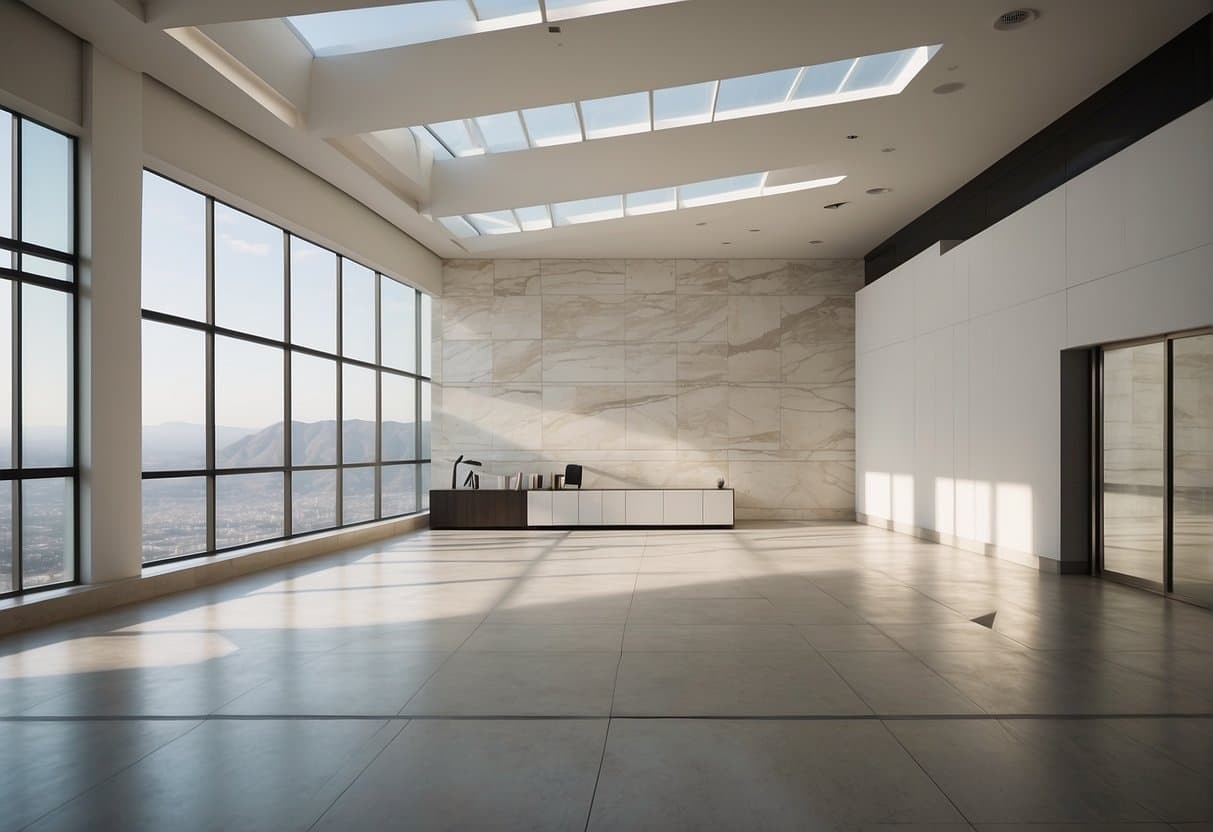
The understated elegance of alabaster walls presents a neutral backdrop that effortlessly transforms the ambiance of a space. This subtle shade masterfully strikes a balance between lightness and mood, making it an increasingly sought-after option in various interior design contexts. The versatility of this off-white hue allows it to seamlessly integrate with diverse styles, further solidifying its position as a popular choice for designers seeking to create harmonious and inviting environments.
Characteristics of Alabaster
Alabaster, often characterized as a warm yet neutral off-white hue, owes its versatility to the subtle warmth it exhibits. This understated quality allows for seamless integration with various colors and materials. As a neutral shade, Sherwin Williams’ Alabaster (SW 7008) serves as a timeless foundation that can both reflect light and remain unassuming, making it an excellent choice for spaces where serenity and order are desired.
Its reflective nature amplifies natural light, while its warmth imbues the atmosphere with coziness without being overwhelming.
Visual Impact of Alabaster on Room Perception
The way alabaster is used on walls has a profound impact on the perception of space. The interplay between light and this material plays a crucial role in shaping our understanding of the room’s dimensions. Alabaster’s unique property to reflect more light creates an airy, expansive feel, making it seem like the space is larger than it actually is. Moreover, its influence extends beyond spatial awareness, as it also softens the edges between walls and ceilings, creating a seamless visual flow.
Alabaster SW 7008 and Its Popularity
Sherwin Williams’ Alabaster SW 7008 has earned widespread acclaim as the brand’s ‘Color of the Year’, a testament to its broad appeal and adaptability. This versatile hue has become a designer’s darling, sought after for its ability to create warm and inviting spaces. Its growing popularity can be attributed in part to its flexibility – it excels as a standalone color or serves as a harmonious anchor to bolder accents.
Choosing the Ceiling Color

When selecting a ceiling color to harmonize with walls painted in Sherwin Williams’ Alabaster, achieving a balance between Light Reflectance Value (LRV) and aesthetic harmony is crucial. As the ceiling serves as a neutral canvas, its influence extends beyond mere visual appeal, impacting the perceived spaciousness and ambiance of the room. By striking a balance between LRV and visual harmony, you can create an environment that feels open, airy, and inviting.
The Role of LRV in Ceiling Color Choice
The Light Reflectance Value (LRV) is a measure of how much light a paint color absorbs versus reflects. Alabaster, for instance, has an LRV of around 82, indicating that it reflects the majority of the light it’s exposed to. When applied to ceiling colors, high LRVs can create a sense of openness and brightness, making them well-suited for creating the illusion of more space. Conversely, lower LRVs can add warmth and definition to a room, but may also make it feel slightly more enclosed.
Balancing Color Contrast and Harmony
When selecting a ceiling color, achieving balance between the two involves striking a delicate balance between contrast and harmony. While high-contrast combinations can be visually striking, a stark ceiling color against neutral walls like Alabaster can disrupt the flow of a room and create an unbalanced atmosphere.
To maintain harmony and create a cohesive interior design, it’s recommended to opt for a ceiling color within a close Light Reflectance Value (LRV) range of Alabaster or use a tinted version of Alabaster itself. This approach ensures a smooth transition between the ceiling and walls, resulting in a visually appealing space that feels grounded and harmonious.
Ceiling Color Trends in Interior Design
When it comes to interior design, ceilings play a crucial role in setting the tone for a room’s aesthetic. Today’s trends suggest that neutral backdrops are all the rage, with soft whites, beiges, and light grays emerging as top choices. These muted hues provide a versatile canvas for accent colors, allowing homeowners to get creative with their decor without sacrificing an open feel.
By embracing these trends, designers can craft spaces that exude sophistication and modernity, while also striking a perfect balance between intentionality and harmony.
Complementary Colors for Alabaster Walls
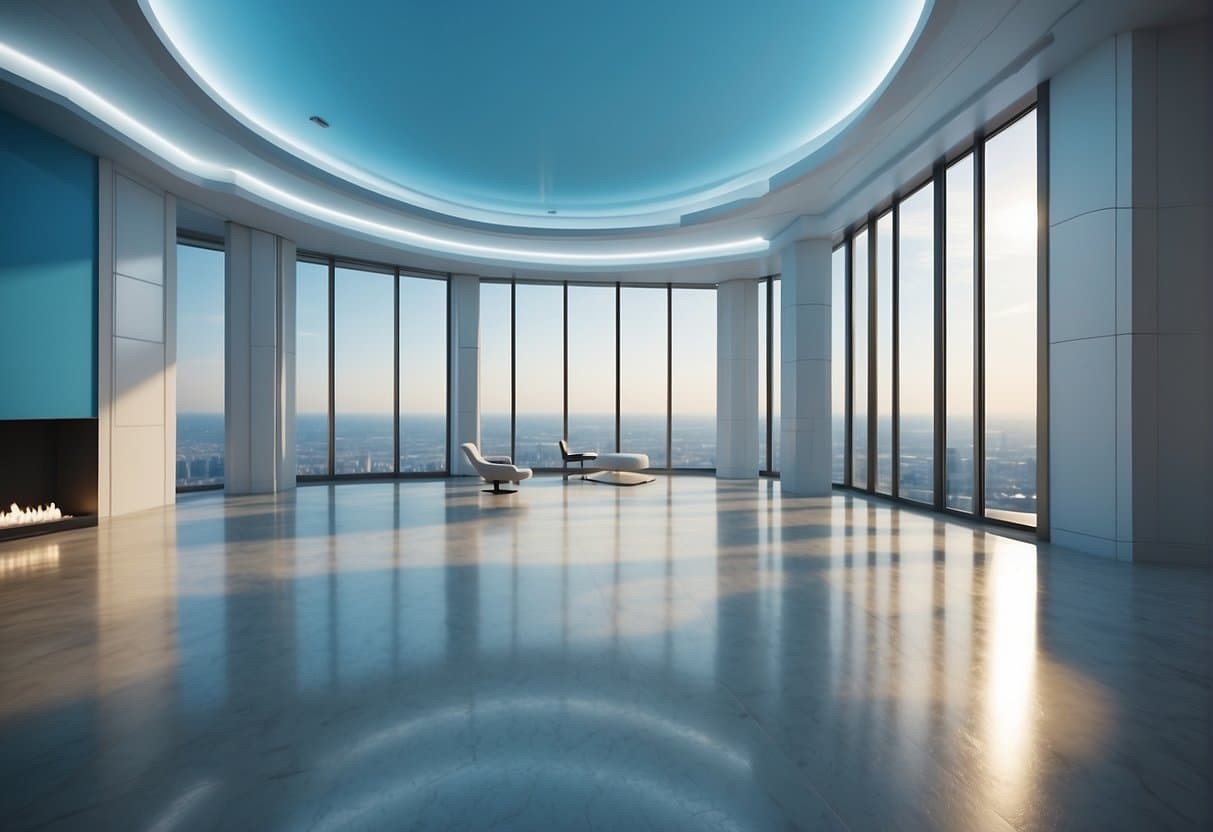
When it comes to enhancing the aesthetic appeal of a room with alabaster walls, selecting the perfect ceiling color plays a crucial role. As the fifth wall, ceilings have the power to greatly impact the overall ambiance and flow of a space. By considering the ceiling’s color alongside the walls, you can create a harmonious and inviting environment that showcases your personal style.
White and Its Variations
When it comes to ceiling paint colors, two popular options are pure white and warm white. A pure white ceiling creates a crisp, clean finish that complements alabaster walls beautifully, effectively expanding the sense of space and brightness in the room. This classic choice is ideal for creating a sense of serenity and calmness. On the other hand, a warm white ceiling brings a subtle warmth to the space, fostering a cozy and inviting atmosphere without overpowering the gentle hue of alabaster.
This variation adds depth and character to the room, making it perfect for creating a welcoming ambiance.
Neutral Tones and Earthy Colors
Combining neutral hues such as beige, tan, and cream creates a soothing atmosphere by providing a harmonious contrast that keeps the room feeling calm and well-balanced. These understated shades also cleverly complement the natural undertones of alabaster, effectively grounding the space while infusing it with a touch of sophistication.
The Use of Darker Colors for Contrast
When it comes to making a statement, incorporating dark colors such as navy or charcoal into your design can be incredibly effective. The stark contrast between these rich hues and alabaster walls creates a visually appealing depth that draws the eye and adds character to a room. This striking visual dynamic is particularly well-suited for formal spaces or rooms with high ceilings, where it can help create a sense of grandeur and sophistication.
Color Coordination with Room Elements

When selecting a ceiling color to complement alabaster walls, it’s essential to take into account various room components like furniture, molding, and illumination. The interplay between these elements significantly impacts the room’s overall atmosphere and visual appeal.
Furniture and Decor Influence
When choosing a ceiling color, it’s crucial to consider the prevailing hues of your furniture and home decor. For spaces featuring darker furniture pieces, a warm white paint color on the ceiling can effectively counterbalance the visual weight, resulting in a lightened and airy ambiance that feels more expansive. Conversely, rooms with lighter furnishings may be able to accommodate bolder ceiling shades, allowing you to add personality and depth through your design choices.
Selecting Trim and Accent Colors
The trim color assumes a vital function in fostering visual continuity between the wall and ceiling palettes. Achieving harmony, the trim can be finished in the same Alabaster semi-gloss as the walls, seamlessly transitioning to the ceiling. Alternatively, one may prefer a complementary trim hue that harmonizes with the ceiling’s color scheme, ultimately yielding a unified appearance that reflects individual taste.
Incorporating Natural Light and Artificial Lighting
The interplay between natural light and artificial lighting has a profound impact on how paint colors are perceived. When ceilings are bathed in sunlight, subtle shades work well to prevent hues from becoming overwhelming. In contrast, spaces with limited natural light can be elevated by ceilings featuring a touch of color, combined with strategic lighting placement. This harmony ensures that alabaster walls remain the room’s central focus, while the overall ambiance is enhanced.
Specific Room Considerations
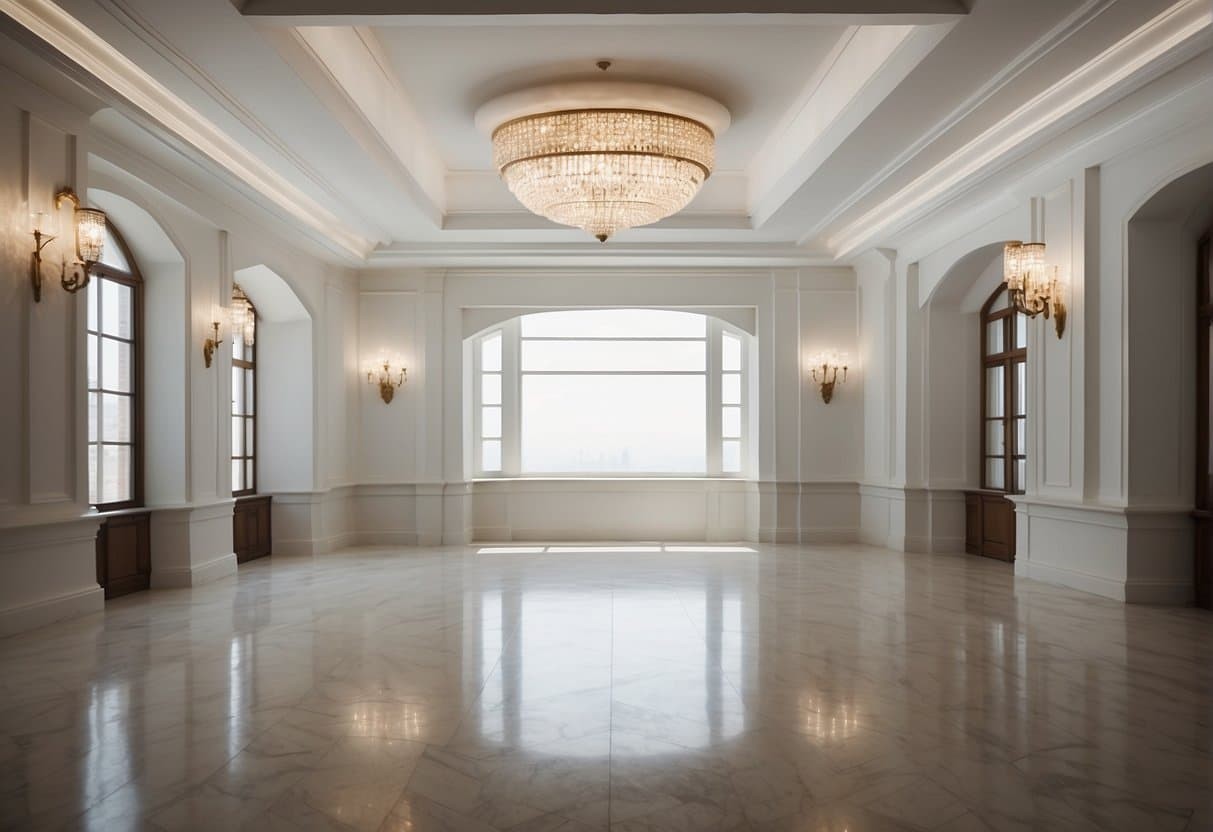
When selecting a ceiling color to complement alabaster walls, it’s essential to consider the room’s purpose, size, and desired ambiance. Additionally, personal taste plays a significant part in this decision-making process, underscoring the importance of taking a thoughtful and deliberate approach to each space.
Ceiling Colors for Living Rooms
When designing the perfect living space, many opt for ceilings that create a sense of openness and airiness. A crisp white finish can be particularly effective at emphasizing alabaster walls and producing a bright, airy ambiance. However, those seeking to add a touch of sophistication and contemporary flair might prefer a light gray ceiling instead. Crucially, homeowners should also consider how natural light interacts with the chosen color scheme throughout the day.
Factors such as the direction of windows, time of day, and level of artificial lighting can all impact the overall aesthetic and functionality of the room.
Bedroom Aesthetics
A serene and restful atmosphere is essential for a bedroom, and the ceiling color plays a crucial role in achieving this ambiance. Softer pastel hues like light blue and warm beige can create a calming effect, effortlessly blending with alabaster walls. Interestingly, the size of the bedroom can influence the choice of ceiling shade, as it may be used to either visually raise or lower the height of the room, further emphasizing its importance in setting the tone for a restful retreat.
Kitchen and Dining Dynamics
When it comes to kitchens and dining rooms, the ceiling color plays a crucial role in creating a harmonious atmosphere. Alabaster walls provide a clean canvas, allowing homeowners to either complement them with a matching ceiling hue or introduce a bold contrast for visual interest. In high-traffic areas like these, brighter colors can inject energy into the space. Pastel yellow, in particular, can revitalize the room and create a lively ambiance.
Conversely, dining areas seeking an intimate atmosphere can benefit from earthier tones like light olive and sage, which bring warmth and coziness to the space. Ultimately, selecting ceiling colors that consider the unique characteristics and intended use of each room allows homeowners to craft a living experience that’s both aesthetically pleasing and functional.
Advanced Color Strategies
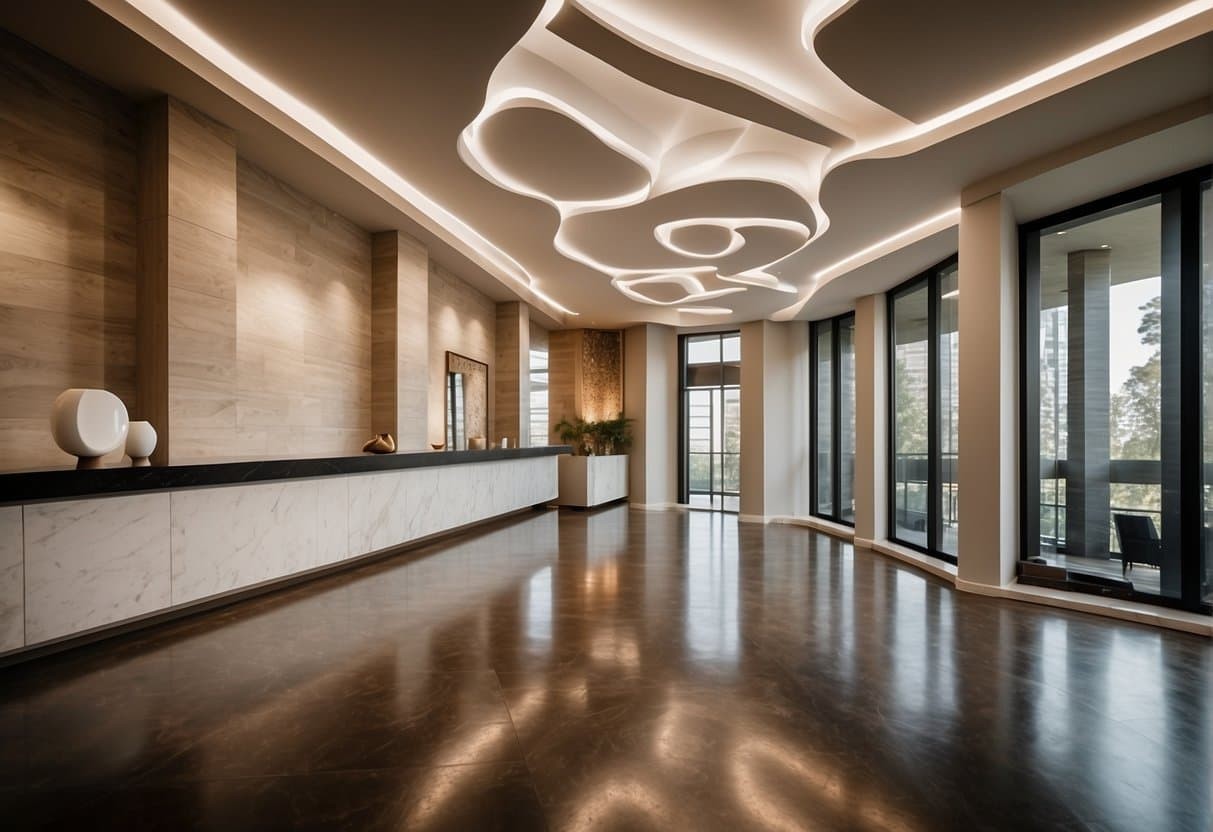
When choosing ceiling colors to harmonize with alabaster walls, it’s essential to consider the profound impact color can have on a space’s ambiance, functionality, and overall emotional resonance. By thoughtfully selecting and applying hues, you can create a focal point, draw attention to specific areas, or simply add visual interest to an otherwise neutral room.
Furthermore, advanced design strategies involve deliberately manipulating color combinations to elicit a desired psychological response and achieve a particular aesthetic effect.
Creating Focal Points with Ceiling Colors
To create visual interest and guide the eye upward, consider selecting a bold ceiling color that serves as a focal point. A vibrant blue, reminiscent of a clear sky, can evoke feelings of openness and airiness, drawing the viewer’s attention to the ceiling and adding depth to the room. In contrast, pairing a light-colored wall, such as alabaster, with a rich navy ceiling creates a striking visual juxtaposition that makes the ceiling a notable feature.
Experimental Ceiling Hues
A bold and imaginative decorator might choose to push the boundaries by introducing unconventional ceiling hues, such as vibrant orange or rich purple. These colours can instantly add a sense of warmth and creativity to a room. Orange ceilings, for instance, can infuse a space with energy and playfulness, while purple can bring a touch of sophistication and luxury.
However, it’s crucial to test these colours in the intended setting, taking into account factors such as lighting and other decorative elements that will ultimately influence the final outcome.
Enhancing Mood through Color
The profound impact of color on mood is undeniable. While lighter hues like light blue have a calming effect, perfect for creating a serene atmosphere, darker shades such as navy can create a cozy and intimate ambiance. As individual responses to color are subjective, it’s crucial to consider the emotional tone you want to convey when selecting a ceiling color. This personal connection with color allows us to craft an environment that resonates with our emotions.
Frequently Asked Questions
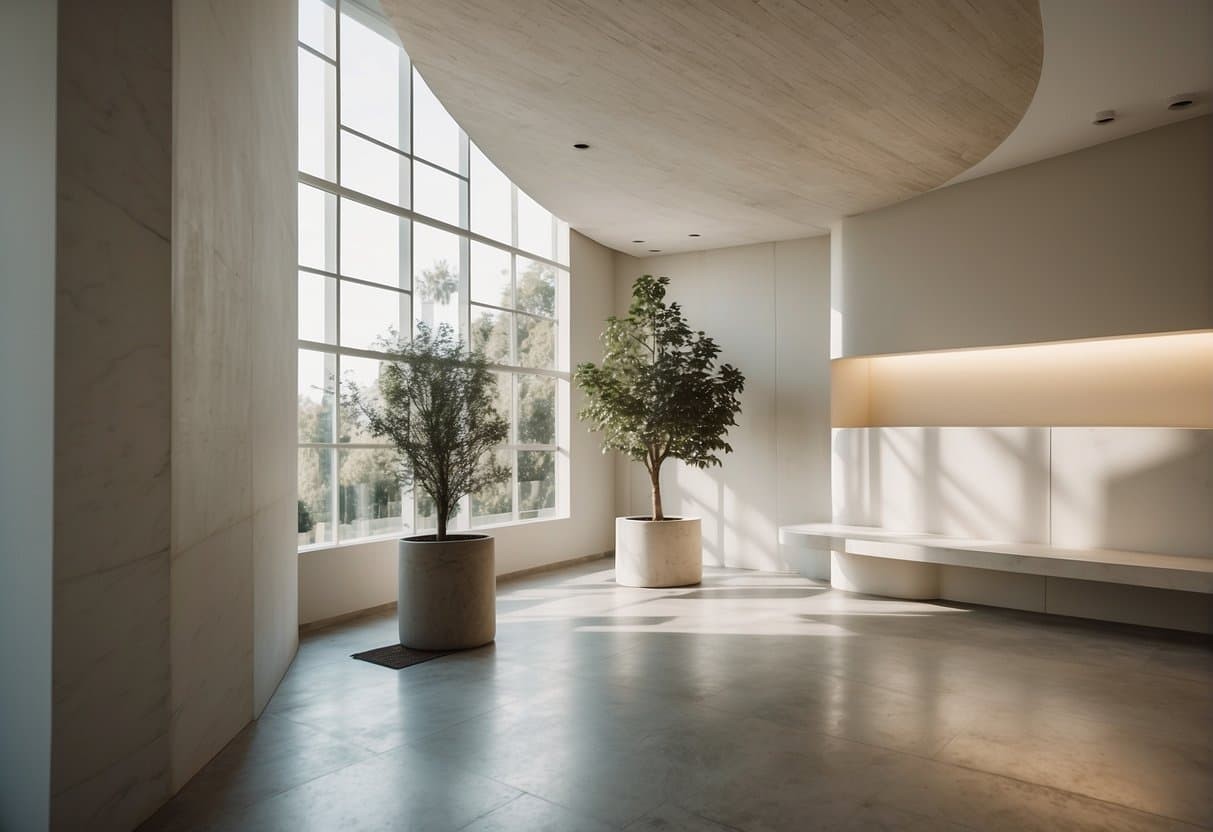
When it comes to selecting a ceiling color that complements alabaster walls, several key factors come into play. Not only is the type of paint used important, but so too is the level of sheen and the chosen hue’s ability to harmonize with its surroundings. By carefully considering these elements, you can create an interior space that exudes a sense of cohesion and visual balance.
What type of ceiling paint would complement alabaster walls for a cohesive look?
When it comes to ceiling paints, a flat or matte finish is frequently the go-to option. This type of finish excels at diffusing light, thereby minimizing harsh glare and creating a sense of calmness in the room. Furthermore, its ability to hide imperfections means that any minor blemishes on the surface will be effectively concealed, resulting in a seamless visual flow with alabaster walls.
Which paint sheen is best suited for ceilings paired with alabaster walls?
When it comes to selecting a finish for ceilings, a flat or matte sheen is often the preferred choice. This type of finish helps to reduce glare and has the added benefit of making the ceiling appear taller, which can further enhance the sense of brightness created by alabaster walls.
Can you suggest some coordinating colors that would go well with alabaster walls for a harmonious interior design?
When it comes to pairing ceiling colors with alabaster walls, three neutral options stand out: white, light gray, and beige. These classic choices create a crisp, refreshing atmosphere that’s perfect for creating a sense of calmness. For a touch of whimsy, consider introducing subtle contrast with soft hues like light blue or pastel yellow.
What are the considerations when choosing trim colors to match alabaster walls?
For a cohesive look, you can select a trim color that matches the alabaster’s original tone by opting for a semi-gloss finish. Alternatively, consider introducing a complementary hue that enhances the warm undertones of alabaster, thereby adding visual interest and depth to your design.
How do alabaster walls influence lighting choices for a space?
The subtle sheen of alabaster walls has a profound impact on the ambiance of a space. By reflecting light, they create a sense of brightness and openness, making it possible to seamlessly transition between warm and cool lighting schemes, allowing homeowners to effortlessly curate a specific mood or atmosphere.
What are some color palette options that include alabaster walls for a modern aesthetic?
To achieve a modern aesthetic, consider combining alabaster walls with a cohesive color palette featuring varying shades of white. This approach creates a clean and sophisticated look that exudes minimalism. Alternatively, introduce visual interest by incorporating bold, contrasting accents like charcoal or deep blues. These striking elements add depth and dimension to the space, resulting in a visually appealing and modern atmosphere.

